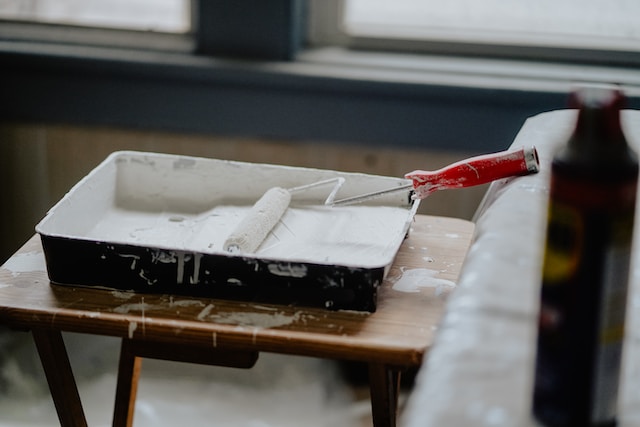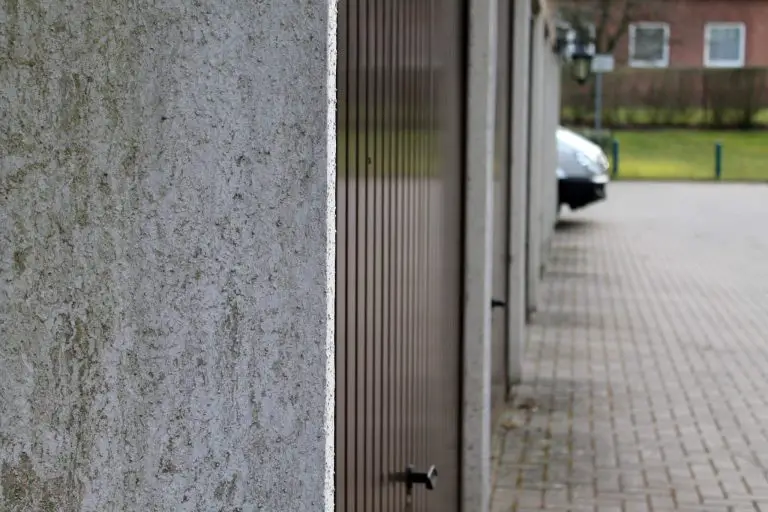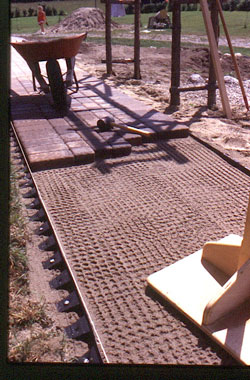
- Video Watch Time = 5 minutes
With the help of a friend, my wife and I finished painting the entire interior of our house a while back, and this reminded me again how great modern latex paint is. The last time we did this job was twenty years earlier. The paint we used back then was excellent (that’s why it lasted so long), but people have obviously been busy in research labs because the paint we used recently was the best ever. It covers dark colours like they weren’t there, it rolls on with all the richness of Belgian chocolate, it’s pretty much odour-free, and it combines a completely flat sheen with surprising toughness. I appreciate all this more than most because I know from experience that house paint wasn’t always so nice.
The Bad Old Days
Back when I started painting homes and garages as a teenager, most house paint was a vile, oil-based brew that was about as pleasant to apply as the volatile fumes were to breathe. Clean up was something of a toxic nightmare too, with the need for mineral spirits and rags to get brushes and rollers clean. Things could not be more different today.
Kinder, Gentler Paint
The paint used on our last paint job was Dulux Diamond, and I was impressed enough with its performance that I tracked down someone technical at the company to answer questions. Dulux has the largest architectural paint plant in Canada, and in some months it puts out more than a million gallons of paint. As it happens, I lucked out because the guy I connected with – Dr. Rob McDonald, Senior Marketing Manager at Dulux – offers that rare combination of technical knowledge, a sense of paint history, and an understanding of how paints and painting are getting better.
“Latex paint has undergone a number of major enhancements since the early days” explains Rob. “Back then, latex actually contained volatile organic solvents to make the product work better. These days there’s almost none of that, and part of this change is for safety. Our two main concerns at Dulux are the environment and the people applying our paint. Good paint is much safer than it was.”
Tips for Better Painting
Besides his official role at Dulux, Rob is also a research chemist by training, and has spent his whole working life around paint in general and latex in particular. When I asked Rob if he had any tips for homeowners looking to get the best possible results, he mentioned the same things I’ve found to be true over the years.
“First, invest time in diligent surface preparation,” explains Rob. “Paint has very little ability to hide dents, dings and flaws. Don’t expect it to.”
Wall prep is my role in our house painting venture, and I’ve found that it often takes as long to prepare wall and ceiling surfaces properly for painting as it does to apply the paint itself. You need a flawless wall if you want a flawless paint job. In most houses, the biggest pre-paint wall repair job involves fixing nail and screw heads that are showing through. Called “screw pops” in the trade, the video below shows how to fix them properly. This video is from my online course PATCHING WALLS LIKE A PRO.
“Next, buy the best paint you can,” says Rob. “ “It’s more difficult and takes way longer to get a great looking finish when you buy cheaper paint, and it just doesn’t last as long.”
Rob’s third tip can save you time as well as boost paint results. “Even as a homeowner, buy and use professional-grade brushes and rollers,” emphasizes Rob. “It’s foolish to save money at the dollar store with cheap application tools when it will make both good paint and good labour look worse than it should. Besides better appearance, great brushes and rollers make the job faster because they hold more paint between trips to the tray.”
When it comes to paint sheen, things have improved a lot, too. The flatter the better in my book, and that’s why I opted for the shine-free, matte version of Dulux Diamond. “When it comes to low sheen paints, a good quality paint will ensure that the surface doesn’t get shiny after washing,” says Rob.












